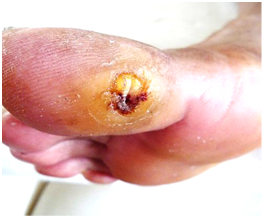
- Kidney disease
- Eye problems
- Nerve damage and blood vessel damage
- High blood cholesterol levels
- Certain infections
- Problems in pregnancy
- Thyroid problems
Type 2 diabetes mellitus comprises an array of dysfunctions resulting from the combination of resistance to insulin action and inadequate insulin secretion. It is disorders are characterized by hyperglycemia and associated with microvascular (ie, retinal, renal, possibly neuropathic), macrovascular (ie, coronary, peripheral vascular), and neuropathic (ie, autonomic, peripheral) complications.
Unlike patients with type 1 diabetes mellitus, patients with type 2 are not absolutely dependent upon insulin for life. This distinction was the basis for the older terms for types 1 and 2, insulin dependent and non–insulin dependent diabetes. However, many patients with type 2 diabetes are ultimately treated with insulin. Because they retain the ability to secrete some endogenous insulin, they are considered to require insulin but not to depend on insulin. Nevertheless, given the potential for confusion due to classification based on treatment rather than etiology, these terms have been abandoned.
Another older term for type 2 diabetes mellitus was adult-onset diabetes. Currently, because of the epidemic of obesity and inactivity in children, type 2 diabetes mellitus is occurring at younger and younger ages. Although type 2 diabetes mellitus typically affects individuals older than 40 years, it has been diagnosed in children as young as 2 years of age who have a family history of diabetes.
Diabetes mellitus is a chronic disease that requires long-term medical attention both to limit the development of its devastating complications and to manage them when they do occur. It is a disproportionately expensive disease; in the United States in 2002, the per-capita cost of health care was $13,243 for people with diabetes, while it was $2560 for those without diabetes. The emergency department utilization rate by people with diabetes is twice that of the unaffected population.




